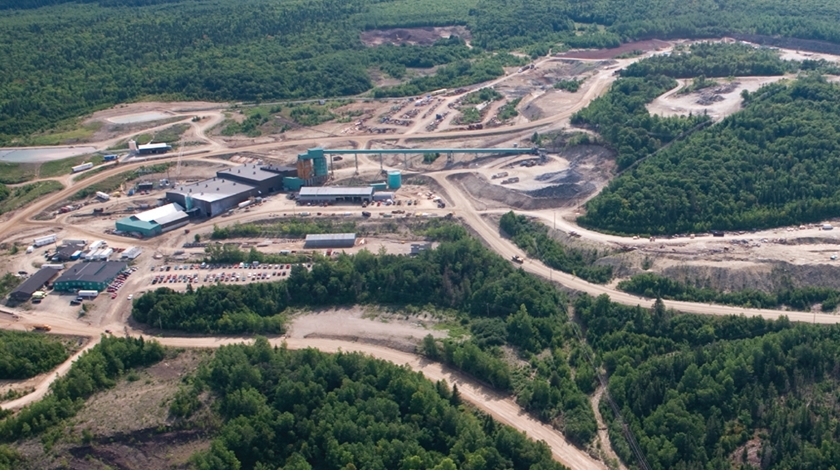Trevali Mining unveils discovery as LME zinc inventories hit nine-year low

Trevali's wholly-owned Caribou Mine and Mill Complex consists of a developed underground mine with significant resources of zinc-lead-silver-copper-gold, a fully permitted 3,000-tonne-per-day processing mill, flotation recovery plant, metallurgical and geochemical laboratories, and a tailings treatment facility, all located approximately 50-km west of Bathurst, New Brunswick, Canada.

Trevali Mining Corp. [TV-TSX, TREVF-OTCQX, 4T1-FSE, TV-LMA] said Monday December 11 that exploration drilling has defined a major body of massive sulphide mineralization at its Caribou Zinc Mine near Bathurst, New Brunswick.
Highlights include 10.1 metres, grading 6.87% zinc, 1.99% lead, 0.33% copper, 53 g/t silver, and 1.8 g/t gold; 3.8 metres grading 9.35% zinc, 4.94% lead, 0.2% copper, 170 g/t silver and 3.4 g/t gold; 7.0 metres grading 7.96% zinc, 2.96% lead, 0.31% copper, 106 g/t silver and 2.6 g/t gold.
The Caribou Zinc Mine is comprised of an underground mine and 3,000 tonne-per-day processing mill, flotation recovery plant, metallurgical and geochemical laboratories and a tailings management facility.
News of the find came amid reports that London Metal Exchange zinc inventories have dropped below the 200,000 tonne level for the first time in nine years. Swiss metals trading giant Glencore was also in the news following the announcement by American Zinc Recycling LLC that a subsidiary of Glencore plc has purchased a 10% stake in its wholly-owned subsidiary American Zinc Recycling Corp.
The strategic investment has been made in connection with the restart of operations at AZR Corp.’s Mooresboro Zinc Refinery in Mooresboro, North Carolina. It involved a commitment by Glencore to purchase, and a subsidiary of AZR Corp., to sell all of its zinc metal produced at the Mooresboro Refinery for a period of 10 years after the start of production.
According to an investment report by Scotiabank, all eyes will be on Glencore Tuesday when the trading giant hosts an investor update that may reveal the company’s near term zinc strategy.
Investors will be watching to see if the strategy involves a restart of its 400,000 to 500,000 tonnes of idled zinc capacity in South America and Australia, a Scotiabank report said.
Back in New Brunswick, Trevali said the discovery at Caribou contained zinc-rich polymetallic intervals.
“As presently defined, the zone is centred approximately 350 metres from the currently defined deposit and remains open for expansion,” the company said in a press release.
In 2015, the first hole into the north limb extension intersected 50.9 metres grading 5.08% zinc, 1.76% lead, 0.37% copper, 59.66 g/t silver and 1.63 g/t gold.
The intercept was interpreted to highlight the excellent continuity of mineralization along the prospective “Caribou Horizon” and was a significant step out beyond the 2014 resource base.
The 2017 exploration program was designed to follow-up and better define and expand this zone of mineralization.
Drilling to date has defined two lenses of massive sulphide mineralization which vary from 5-to-plus-30 metres thick and have a currently modeled strike length of approximately 450 metres and a dip length of approximately 700 metres, within which higher grade “run of mine” mineralization occurs.
Trevali shares advanced 2.29% or $0.03 to $1.34 on Monday.
